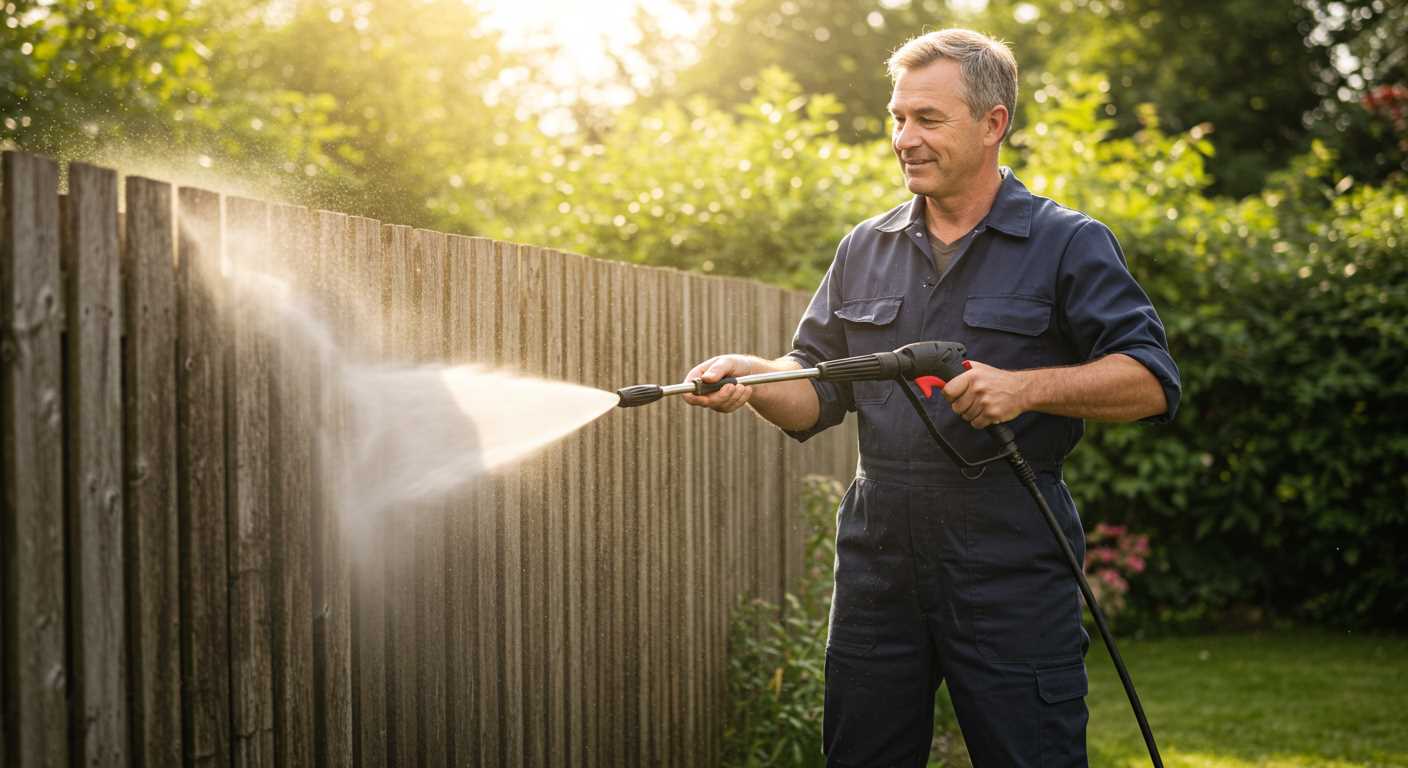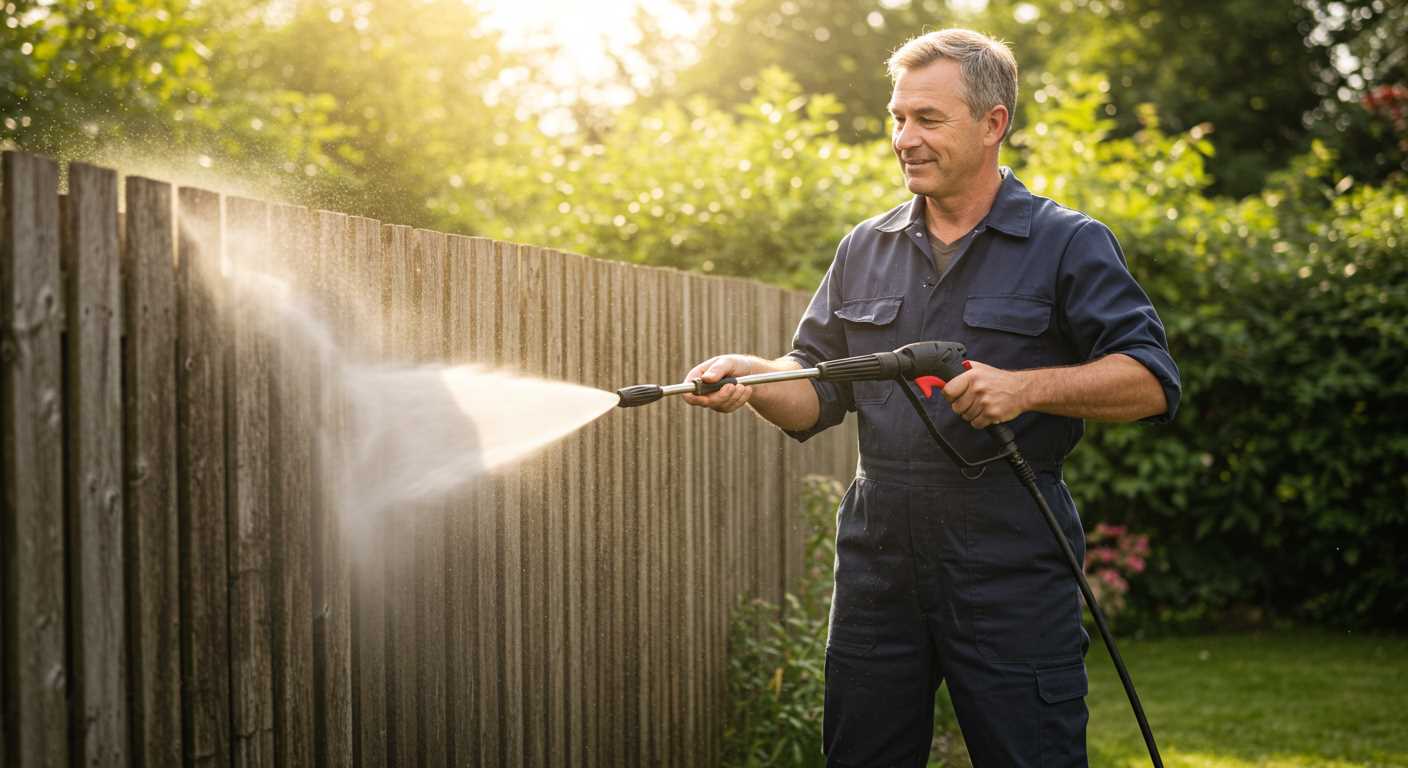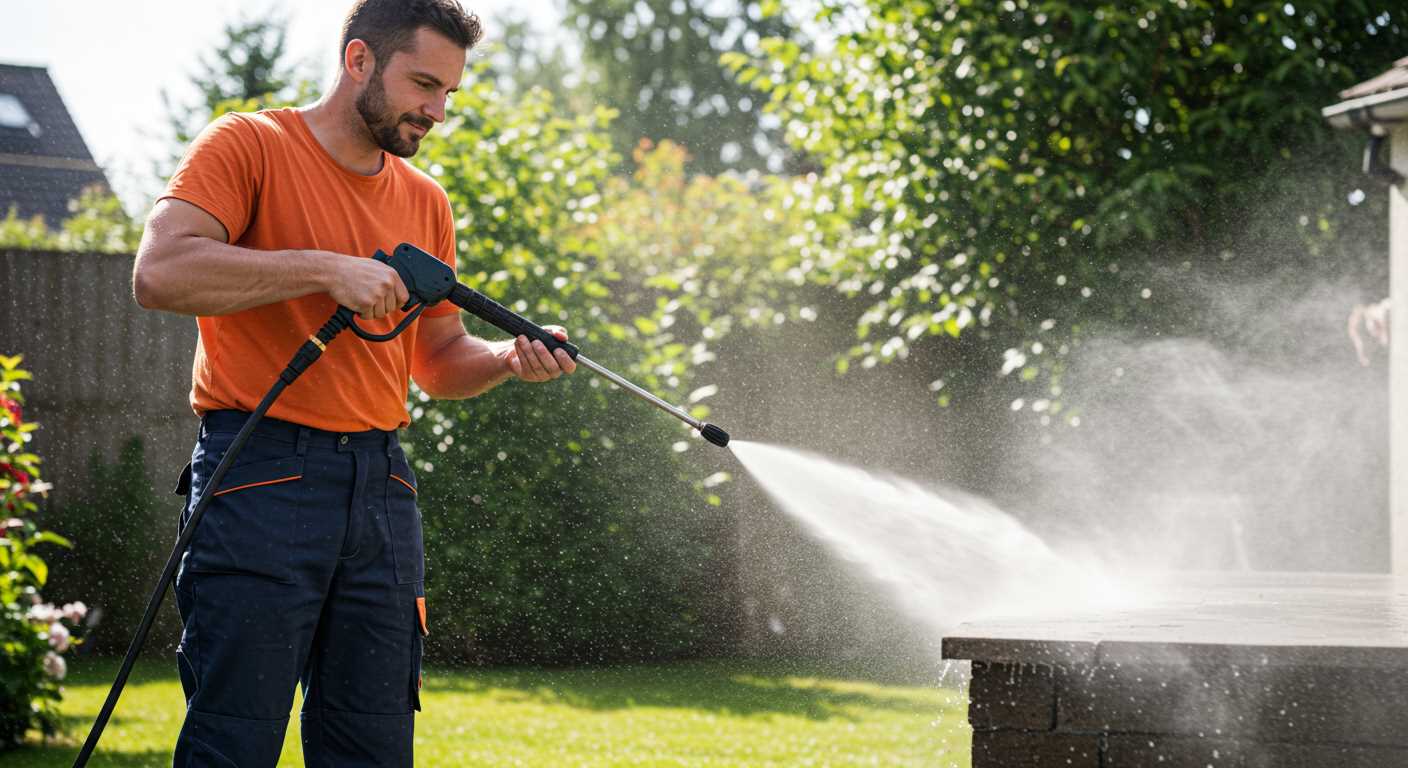




For a sparkling patio or a spotless car, timing is everything. Early mornings or late afternoons are ideal for tackling outdoor surfaces, avoiding the harsh midday sun that can lead to streaks or rapid drying. In my experience, a gentle breeze can be a friend, helping to disperse the mist and keep your workspace dry.
Choosing the right nozzle is crucial. A wider spray pattern, typically a 25-degree nozzle, works wonders for cleaning decks or driveways, while a narrower jet, like the 15-degree option, is perfect for tougher stains on concrete or brick. I remember the first time I switched nozzles; the difference was astounding! I went from scrubbing for hours to blasting away grime in minutes.
Preparation is key. Clear the area of furniture and debris to prevent damage and ensure safety. If you’re tackling a particularly stubborn surface, pre-soaking with a suitable detergent can make the job much easier. I once had a client who was hesitant to use soap, but after demonstrating the difference, they were amazed at the results.
Lastly, maintain a consistent distance from the surface. Too close can cause damage, while too far might not be effective. I’ve learned that keeping a distance of about 12 to 18 inches usually yields the best results. With these tips, you’ll be well on your way to achieving professional-quality cleaning without the hassle.
Choosing the right pressure washer for your task
Selecting the appropriate cleaning tool starts with understanding your specific needs. Based on my experience, here are some key factors to consider:
- Cleaning tasks: Identify your primary use. For instance, light duties such as cleaning patio furniture or vehicles require a model with a lower pressure rating (around 1300-2000 PSI). Heavy-duty jobs like stripping paint or tackling tough grime may need a unit rated between 2000-3000 PSI.
- Water flow rate: Measured in gallons per minute (GPM), this affects cleaning efficiency. A higher GPM often leads to faster cleaning. For standard residential tasks, a machine with 1.5 to 2.5 GPM is advisable.
- Power source: Electric units are generally quieter and suitable for light to medium tasks, while petrol-powered versions offer portability and higher pressure, making them ideal for extensive outdoor projects.
- Accessories: Consider models that come with various nozzles and attachments. For example, a rotating nozzle can significantly enhance cleaning performance on stubborn surfaces.
- Portability: If you plan to move the equipment frequently, look for lightweight models with wheels. This feature can save you time and effort, especially when tackling larger areas.
In my previous role, I often encountered customers unsure about which model to purchase. I always recommended that they assess the surfaces they intended to clean. For delicate materials like wood, a lower PSI with a wider spray angle is crucial to avoid damage. Conversely, for concrete or brick, a concentrated jet can effectively remove built-up dirt.
Lastly, don’t overlook maintenance. Regular upkeep prolongs the lifespan of your device. Perform routine checks on hoses, nozzles, and connections to ensure everything operates smoothly.
Preparing Surfaces Before Washing
Thoroughly clearing the area of debris is the first step. I remember a time I neglected this and ended up with mud splattered everywhere. Sweep away leaves, dirt, and any loose materials that could obstruct the cleaning process. This simple act not only improves efficiency but also prevents potential damage to your surroundings.
If you’re dealing with stubborn stains, applying a suitable cleaning solution beforehand can make a significant difference. I once tackled a driveway covered in oil stains without a pre-treatment, and it took much longer than necessary. Choose a cleaner that complements the surface material. For instance, concrete surfaces respond well to alkaline cleaners, while wood may require something gentler.
Inspecting the Surface
Check for any damage before you start. Cracks or loose paint on surfaces like wooden decks or older concrete can worsen with high-velocity water. I learned this the hard way while cleaning a patio; I noticed a few peeling areas after starting the job, and the intense spray caused more paint to flake off. If repairs are needed, take care of those first.
Setting Up the Area
Ensure that any nearby plants or delicate items are protected. Cover them with tarps or plastic sheeting. On one occasion, I forgot to shield my neighbour’s flower beds, and a few plants suffered from the spray. Adjust your nozzle spray pattern as well; a wider spray can help safeguard sensitive areas while effectively cleaning the rest.
Understanding different nozzle types and their applications
Choosing the right nozzle can significantly enhance your cleaning experience. Each nozzle type is designed for specific tasks, making it easier to tackle a variety of surfaces and materials. I’ve found that knowing the distinctions can save time and prevent damage.
0-degree and 15-degree nozzles
The 0-degree nozzle delivers a concentrated, powerful jet of water, ideal for removing stubborn stains on hard surfaces like concrete or brick. However, it requires caution; it’s easy to damage softer materials. The 15-degree nozzle offers a wider spray while still maintaining power, making it perfect for cleaning driveways and patios. I once tackled a particularly grimy driveway with the 15-degree, and the results were impressive without risking surface damage.
25-degree and 40-degree nozzles
The 25-degree nozzle is versatile, suitable for general cleaning tasks such as washing cars, siding, and outdoor furniture. It strikes a balance between pressure and coverage. On the other hand, the 40-degree nozzle provides the gentlest spray, perfect for delicate surfaces like painted wood or windows. I’ve cleaned my garden furniture with a 40-degree nozzle, achieving a thorough clean without any scratches. For those considering a domestic petrol pressure washer, the right nozzle choice can optimise performance and results. Check out this domestic petrol pressure washer guide for more insights on models that suit various needs.
Safety Precautions to Consider During Pressure Washing
Always wear protective gear, such as safety goggles, gloves, and sturdy footwear. This equipment prevents injuries from debris and water spray. I once neglected this and ended up with a small shard of wood embedded in my arm–an experience I wouldn’t wish on anyone.
Maintain a safe distance from the surface being cleaned. Keep the nozzle at least 18 inches away to avoid damage. A friend of mine accidentally got too close to a wooden fence, leaving it with deep gouges. Remember, distance is your ally.
Ensure that the area is clear of people, pets, and fragile items. I typically mark off a perimeter with cones or tape to keep curious onlookers at bay. One time, my neighbour’s cat almost wandered into the line of fire while I was distracted. It’s a small step that pays off significantly.
Check for overhead power lines before starting. Staying aware of your surroundings is critical. I’ve seen far too many accidents occur when someone overlooked this simple check. If you’re near power lines, consider hiring a professional.
Don’t operate equipment in wet conditions or on slippery surfaces. I learned this the hard way when my footing slipped, causing me to lose control. Wait for a dry day or ensure the area is adequately prepared to prevent accidents.
Be cautious with chemicals. If you choose to add cleaners to the mix, ensure they’re compatible with the machine. I’ve witnessed damage from using harsh chemicals that weren’t recommended for specific models. Always read the manual.
Finally, ensure your unit is in good working order. Regular maintenance can prevent malfunctions. I’ve had my share of surprises with machines that weren’t properly maintained. Always check hoses, connections, and nozzles before starting.
| Precaution | Description |
|---|---|
| Protective Gear | Wear goggles, gloves, and sturdy shoes to avoid injuries. |
| Safe Distance | Keep nozzle at least 18 inches away from surfaces to prevent damage. |
| Area Clearance | Ensure no people, pets, or fragile items are nearby. |
| Power Lines | Check for overhead power lines to avoid accidents. |
| Wet Conditions | Avoid operation on wet or slippery surfaces. |
| Chemical Caution | Use only compatible cleaners to prevent damage. |
| Equipment Maintenance | Regularly check and maintain the unit for safe operation. |
For those interested in multitasking in the kitchen, consider checking out how long to put potatoes in pressure cooker for some efficient cooking tips.
Post-washing maintenance and care for your equipment
After completing your cleaning tasks, immediate attention to your tools will extend their lifespan significantly. Always disconnect the water supply and power source promptly to prevent any accidental activation. Once disconnected, release any remaining pressure in the system by squeezing the trigger on the gun. This simple step avoids potential injuries and equipment damage.
Cleaning and Storing
Rinse the gun, hose, and nozzle with clean water to remove any detergent residue or debris. This prevents clogs and maintains optimal performance for future tasks. Store the accessories in a designated area, ensuring that they are neatly coiled and untangled. A well-organised storage solution not only saves time for your next project but also protects your equipment from wear and tear.
Regular Checks and Maintenance
Conduct routine inspections of hoses and connections for any signs of wear or leaks. If you notice any damage, replace the parts immediately to avoid operational issues later. It’s advisable to check the oil levels in gas-powered models regularly. Change the oil as per the manufacturer’s recommendations to ensure smooth operation. For electric units, keep the motor clean and free of dust to prevent overheating.
Finally, consider winterising your equipment if you live in colder climates. A simple step is to run a mixture of antifreeze through the system to prevent freezing and cracking during storage. Taking these actions will not only keep your tools in prime condition but will also make your next cleaning venture far more enjoyable.
FAQ:
What surfaces can I clean with a pressure washer?
A pressure washer is versatile and can be used on a variety of surfaces. Common applications include cleaning driveways, patios, decks, and siding. It’s also effective on vehicles, outdoor furniture, and fences. However, care should be taken with delicate surfaces like painted wood or some types of brick, as the high pressure can cause damage. Always check the manufacturer’s recommendations for the best results.
How do I choose the right pressure washer for my needs?
Selecting the right pressure washer depends on what tasks you plan to undertake. For light cleaning tasks like washing cars or garden furniture, a model with around 1300 to 2000 PSI (pounds per square inch) is generally suitable. For tougher jobs, such as cleaning concrete or removing mildew from siding, you may need a machine that offers 2500 PSI or more. Also, consider whether you want an electric or petrol-powered model, as each has its advantages related to portability and power.
When is the best time of year to use a pressure washer?
The ideal time to use a pressure washer is typically in the spring or early autumn. This is when dirt and grime build-up from winter or summer activities can be tackled effectively. Additionally, the weather during these seasons is often mild, making outdoor work more pleasant. However, pressure washing can be done year-round as long as temperatures are above freezing and conditions are dry, allowing surfaces to dry quickly after cleaning.
What safety precautions should I take when using a pressure washer?
Before using a pressure washer, it’s important to follow some safety precautions. Always wear protective eyewear and sturdy footwear to shield yourself from flying debris. Ensure that the area is clear of bystanders, especially children and pets. Familiarise yourself with the machine’s instructions and start with a lower pressure setting to avoid damaging surfaces. Additionally, never point the nozzle at people, animals, or yourself, and avoid using the washer on ladders or unstable surfaces to prevent falls.
How do I maintain my pressure washer for longevity?
Regular maintenance can extend the life of your pressure washer. After each use, it’s advisable to run clean water through the machine to flush out any detergent or debris. Check and clean the filter regularly, and inspect the hoses and connections for any signs of wear or leaks. If you have a petrol model, ensure the oil is changed per the manufacturer’s recommendations. Storing the machine in a dry place and winterising it if you live in a cold climate can also help prevent damage.
When is the best time to use a pressure washer?
The ideal time to use a pressure washer largely depends on the type of cleaning you are planning to do. For outdoor surfaces such as driveways, patios, and decks, spring and early summer are often the best times. This is when dirt and grime from winter have accumulated, making it an excellent opportunity to clean these areas. If you’re preparing surfaces for painting or sealing, consider using a pressure washer in the late summer or early autumn when the weather is dry. This ensures that your surfaces are clean and free of moisture before applying any coatings. For indoor cleaning, pressure washers can be used year-round, but ensure the area is well-ventilated and that you follow any safety precautions.
What are the safety precautions I should take when using a pressure washer?
Safety is paramount when operating a pressure washer. First, always wear appropriate personal protective equipment (PPE), including safety goggles to protect your eyes from debris and a dust mask if you’re working in an area with potential airborne particles. Closed-toe shoes with non-slip soles are advisable to provide traction and protection for your feet. It’s crucial to read the manufacturer’s manual before using the machine, as each model may have specific safety instructions. Always check the power cord and hoses for damage before use, and ensure that the area you are cleaning is free from obstacles and people. Keep a safe distance from electrical sources and avoid using a pressure washer on ladders or unstable surfaces. Lastly, never point the nozzle at yourself or others, as the high-pressure water can cause serious injuries.






.jpg)


